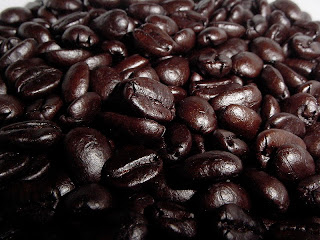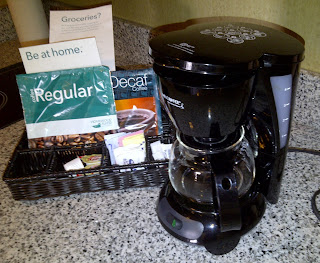What is K Cup Coffee?
 |
| What is K Cup Coffee? Image Source: Dr. Penny Pincher |
K Cup coffee is coffee made using a Keurig brewing machine. Keurig brewing machines use coffee pods that contain ground coffee. The first generation of Keurig machines use coffee pods called K-Cups.
 |
| A K Cup Coffee Pod is used to brew K Cup Coffee Image Source: Dr. Penny Pincher |
A K-Cup is a type of coffee pod filled with ground coffee and a paper coffee filter. The K-Cup is a small plastic cup that is sealed with an air-tight lid to maintain freshness.
How Do You Make K Cup Coffee?
You need a Keurig coffee brewer and a K-cup to make K Cup coffee. K Cup coffee is easy to make:- Place an empty cup under the Keurig brewer
- Open the Keurig K-Cup compartment
- Place the K-cup inside
- Close the K-Cup compartment lid on the Keurig brewer
- Press the "brew" button
In about one minute, you'll have a hot, fresh cup of K Cup coffee.
 |
| Keurig brewers use K-Cups to make K Cup Coffee Image Source: Dr. Penny Pincher |
Where Can I Get K Cup Coffee?
K Cup coffee is not sold in restaurants of coffee shops. Keurig brewers that make K Cup coffee are used in homes and offices. If you want to try K Cup coffee, but do not have a Keurig brewer, you might be able to find one in a break room at work. Another option is to see if any of your friends have a Keurig brewer at home. Most people with a Keurig brewer are excited to show people their machine and let them experience K Cup coffee.How Much Does K Cup Coffee Cost?
The Keurig coffee brewing machine costs about $75 to a few hundred dollars, depending on the model and features of the coffee maker. Some Keurig machines use K-Cups and some use Vue coffee pods. The first generation machines use K-Cups: you'll need a Keurig machine that takes K-Cups to make K Cup coffee.Once you have a Keurig brewer, you need a K-Cup for every cup of coffee you brew. K-Cups cost about 65 cents each for premium brands and about 50 cents each if you know how to find cheap K-Cups.
You can also get refillable K-Cups that you fill with your own ground coffee that cost much less than buying K-Cups. However, one of the main advantages of K Cup coffee is the convenience of being able to quickly pop in your favorite coffee flavor and brand, quickly brew the coffee, and throw the K-Cup away with no clean-up required. If you use refillable K-Cups, you need to take time to load the refillable K-Cup and also need time to wash and clean the refillable K-Cup for the next cup of coffee.
What Does K Cup Coffee Taste Like?
K Cup coffee is always hot and fresh since it is made one cup at a time. K Cup coffee is popular in break areas at work for coffee breaks because everyone gets a fresh cup of coffee. A regular coffee maker leaves coffee sitting in the pot and it gets stale quickly.You can choose your flavor of K Cup coffee. You can get light roast, medium roast, dark roast, decaf, and flavored coffee. You can also get K-Cups to make other hot beverages with your Keurig brewer like hot tea and hot chocolate.
How Does K Cup Coffee Compare to Regular Coffee?
You can make a better cup of coffee than K cup coffee. Fresh ground whole coffee beans taste better than ground coffee. I would say the flavor of K Cup coffee is similar to coffee you can make using ground coffee that is not fresh ground from whole beans.K Cup coffee is definitely faster and more convenient than regular coffee. Since you heat water for only one cup of coffee at a time, K Cup coffee is very fast. Almost no clean-up is required for K Cup coffee- just throw the used K-Cup away after brewing and you are ready to make the next cup.
It is really easy to try different flavors and brands of coffee with K Cup coffee. You can buy assortments of K-Cups to make it easy to try new kinds or to find something that anyone in your home or office would like.
Copyright © 2013 by Dr. Penny Pincher. All Rights Reserved. Coffee Maker Journal



























